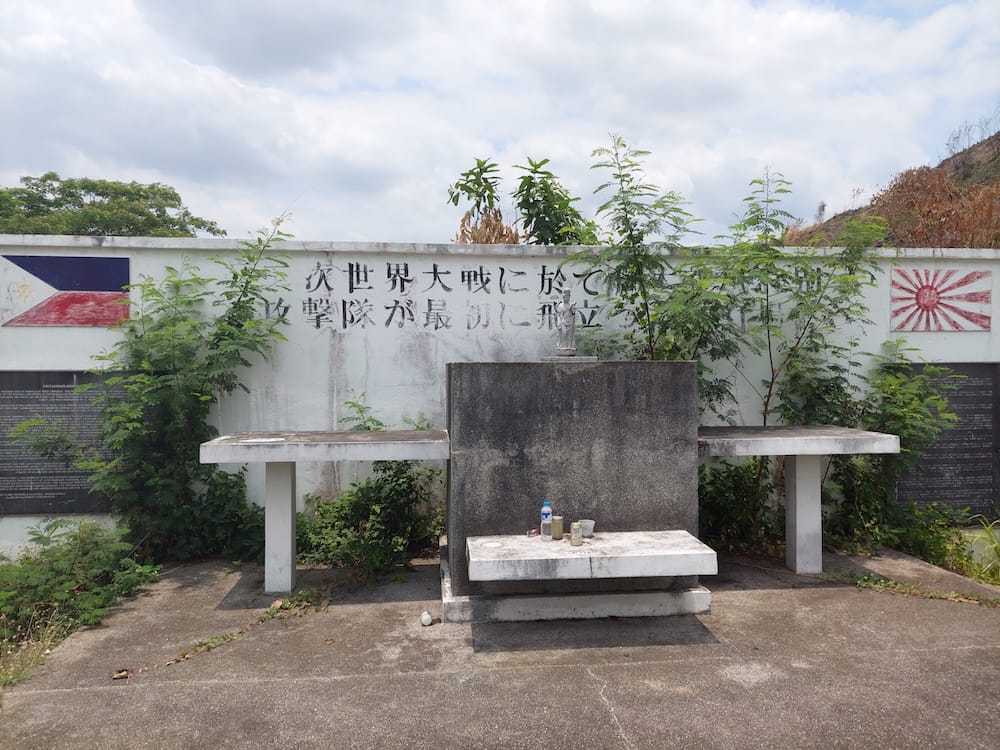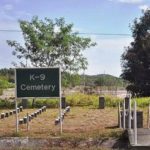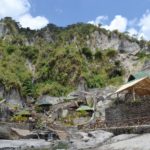The air field was constructed by the Japanese in March 1944. In October 1944 it became the First Kamikaze Air Field of World War II. It was here where the Kamikaze pilots took off on 21 October 1944 to attack US Naval Forces East of the Philippines. A shrine was erected in honor of the pilots who participated in the WWII.
*Please see the end of this listing for important access information
The first Japanese kamikaze pilots led by Lt. Yukio Seki took off from Mabalacat West Airfield on October 21, 1944. They returned to base after they could not locate any enemy ships.
On October 25, 2004, the monument at Mabalacat West Airfield, sometimes now called Kamikaze West Airfield, was unveiled in a special ceremony attended by both local Filipinos and visitors from Japan.
Daniel Dizon a local historian and artist, had argued since the 1960s that Mabalacat should do something to remember the Japanese Kamikaze Special Attack Corps. The first monument in Mabalacat Town to the Kamikaze Corps was erected in 1974 at the former site of Mabalacat East Airfield. However, this monument was buried nearly completely in ash from the 1991 eruption of nearby Mount Pinatubo. In 2000, a wall with the Japanese and Philippine flags was erected at the same site as the original monument at Mabalacat East Airfield. In October 2004, a kamikaze pilot statue was unveiled in front of the wall.
The Mabalacat West Airfield Monument has the same inscription in Japanese as the original monument built at Mabalacat East Airfield: “Airfield where Kamikaze Special Attack Corps aircraft first took off in World War II.” The west airfield was the actual location from where the first kamikaze squadron led by Lt. Yukio Seki took off on October 21, 1944. However, it was impossible to build a monument there for many years since Clark Air Base, a US military installation until 1991, used the area of the former Mabalacat West Airfield as an ammunition dump.
The monument displays flags of both the Philippines and Japan. The left side has a plaque in English with a history of the Kamikaze Corps at Mabalacat, and the right side has a plaque with the same basic history in Japanese. The English sign reads as follows:
First Kamikaze Airfield of World War
This spot is the western end of Mabalacat West Airfield – the very first kamikaze take-off airfield of World War II. The very first kamikaze unit of the war was organized in the Mabalacat, Pampanga on 20 October 1944 by Vice Admiral Ohnishi Takijiro among the 23 flyers of the 201st Air Group, 1st Air Fleet, IJN. Then stationed in the said town, it was named the “Shimpu Special Attack Corps”, and was commanded by Lt. Seki Yukio.The first kamikaze force was subdivided into four units, namely the Shikishima Unit, the Yamato Unit, the Asahi Unit and the Yamazakura Unit. The first kamikaze force consisted initially of 13 pilots and were ceremoniously inducted by V. Adm. Ohnishi himself at this airfield at about 3 p.m. on the said date.
The very first official kamikaze attack sortie of World War II took-off from this airfield at 9 a.m. on 21 October 1944 when Lt. Seki, leading the Shikishima Unit, composed of five bomb-laden “Zero” fighters, flew-out and headed for U.S. Naval targets reported deploying at Philippine eastern seas. The unit was unable to locate targets and had to return by landing at the Mabalacat East Airfield – the air group’s landing airstrip. For the next three days the Shikishima Unit took-off from the West Airfield to attack U.S. warships but due to bad weather it was unsuccessful. Finally, at 7:25 a.m., on 25 October 1944, the Shikishima Unit took-off from the Mabalacat East Airfield and at 10:52 a.m. hit U.S. targets near Tacloban, Leyte. Lt. Seki hit first and sank the carrier USS Saint Lo. His men also hit and heavily-damaged the carriers: USS Sangamon, USS Suwanee, USS Santee, USS White Plains, USS Kalinin Bay and USS Kitkun Bay. Some kamikazes from Cebu and Davao also joined in this successful attack.
Lt. Seki’s men were, FC/FPO Nakano Iwao, FC/FPO Tani Nobuo, C/FSS Nagamine Hagime and S/FSS Oguro Shigeo. Their initial success popularized kamikaze tactics to the majority of Japanese pilots in the Philippines, Taiwan, Okinawa and Japan.
The last kamikaze sortie from this airfield took-off at 4:45 p.m. on 06 January 1945 and attacked the U.S. landing armada at Lingayen Gulf. They were five “Zeroes”, led by a Lt. Nakano. His men were: W/O Goto, W/O Taniuchi, W/O Chichara and Lt. (jg.) Nakano. Other kamikazes from Angeles and Echague joined in this attack. Sunk was the USS Long. Heavily damage were: USS New Mexico, USS California, USS Louisville, USS Minneapolis, USS Columbia, USS Allen M. Sumner, USS Walke, USS O’Brien, USS Southard and USS Brooks.
At dawn on 08 January 1945, the last flight from this airfield took-off when two evacuation planes loaded with classified kamikaze documents and personnel made a low flying escape to Taiwan. All other pilots and ground crewmen who were left behind fought to the last man as infantrymen for the defense of the entire Clark Field Complex against attacking U.S. Army forces. On 26 January 1945 this airfield finally fell into American hands.
By the end of World War II, the kamikaze sunk and heavily-damaged 322 U.S. Navy vessels, killed 12,300 American sailors and 36,000 others were seriously wounded. Out of 13,022 kamikaze warriors, 4,600 died in action. The Japanese kamikaze of World War II was the largest military suicide organization in all the annals of war history. It was instituted as a last desperate measure for the defense of homeland Japan from foreign invasion. The visitor is respectfully requested to say a prayer for the eternal repose of the souls of all kamikaze and American war dead and for lasting peace and friendship throughout the world. [sic]
A Project of Clark Tourism & Cultural Affairs Office
Clark Development Corporation.
Seki Tunnel
A few steps away from the shrine is Seki Tunnel, situated at the Northwest corner of the Kamikaze West Airfield in a hill called “Babang Dapu” named by the local Aetas. Used as an air raid bunker by the Japanese, it was called Seki Tunnel in honor of Lt. Seki Yukio, the first Kamikaze pilot to sink a US Air Craft Carrier off the Leyte Gulf. Lt. Seki is considered as the World’s First Official “Human Bomb”.
A sign put up in 2002 describes the tunnel history:
Air Raid Bunker
A Known Kamikaze Tunnel
It was constructed quickly as an air raid bunker for Tamai Asaichi, commander of the 201st Air group, 1st Air Fleet, Imperial Japanese Navy, the very first Kamikaze unit of World War II. It was constructed in late October 1944 and provided protection for Commander Tamai and some of his Kamikaze pilots during deadly U.S. air raids.
The sign has a photo with the caption: “The Commander of Japanese Air Force in Clark addresses a group of pilots.”
There was also a color sign put up in 2002 near the road, but this no longer stands. The sign had the following history:
Kamikaze West Airfield
This airfield was constructed by the Japanese in March 1944. By October 1944, it was operating as the West kamikaze air field during World War II. It was here where the first Kamikaze pilots took-off on 21 October 1944 to attack U.S. naval forces east of the Philippines. This airfield was used by the Kamikaze up to 10 January 1945 when they transferred to Taiwan [16]. On 28 January 1945, American liberation forces captured this airfield as well as the whole of Clark Field.
Important Access Information
It should be noted that although visitors are welcome at the Kamikaze West Memorial, prior advance authorisation is now need to gain access as there is a shooting range in close proximity to the memorial. Access is free. Those wishing to visit the memorial need to first visit the CIAC Office (ASD Building) near Clark Airport. If you’re lucky (like we were) you might even get a police escort down to the memorial! Do not be put off by this requirement as the ASD officers are very friendly, helpful and obliging.





